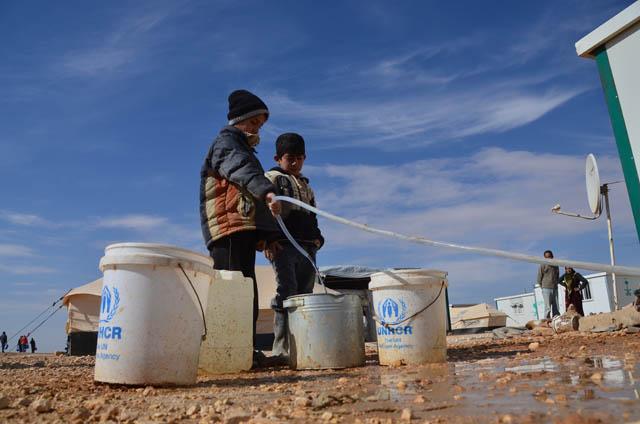AMMAN — Chemical and biological tests indicate that the Zaatari aquifer, above which around 100,000 refugees are currently living, is free from feared wastewater pollution, a senior government official said on Tuesday.
The possible contamination of the Zaatari aquifer, which lies beneath the world’s second largest refugee camp, has been a source of concern in Jordan since the establishment of the camp, Water Minister Hazem Nasser said.
“The public’s fears and concerns of a likely pollution are justified and legitimate, because the Zaatari aquifer is one of the Kingdom’s most important aquifers that supply drinking water to people in the northern region and Zarqa Governorate,” Nasser told reporters at the signing of an agreement to install new mobile wastewater treatment units in the Zaatari Refugee Camp.
He underscored that his ministry has carried out chemical and biological tests on water samples taken from the aquifer to check for signs of pollution caused by wastewater leakage.
“All tests and monitoring measures showed that the Zaatari aquifer is not polluted… there is no reason for people to worry about this anymore,” Nasser highlighted.
A recent study by the ministry had warned that the pollution of the main aquifer lying beneath the Zaatari Refugee Camp in Mafraq Governorate, some 80km northeast of Amman, is only a matter of time.
Over-pumping to meet the demand of hundreds of thousands of Syrian refugees is not the only risk facing the aquifer, according to the study, which said that pollution due to wastewater leakage is expected within one to 10 years.
More than half-a-million Syrians have taken refuge in the Kingdom since the conflict in their country erupted in March 2011. Over 80 per cent of Syrian refugees in Jordan live amongst host communities, while the rest are accommodated at the Zaatari camp and the Mreijeb Al Fhoud Camp in Zarqa Governorate.
The influx of refugees is placing pressure on the local sewage network, causing it to overflow frequently, according to officials and residents of Mafraq.
The study indicated that over 34.164 million cubic metres of wastewater are generated annually by Syrian refugees in Jordan.
The ministry and the Public Security Department are currently monitoring trucks transferring wastewater from the camps to Ikeider Landfill, after some were discovered dumping sewage in nearby valleys.

















